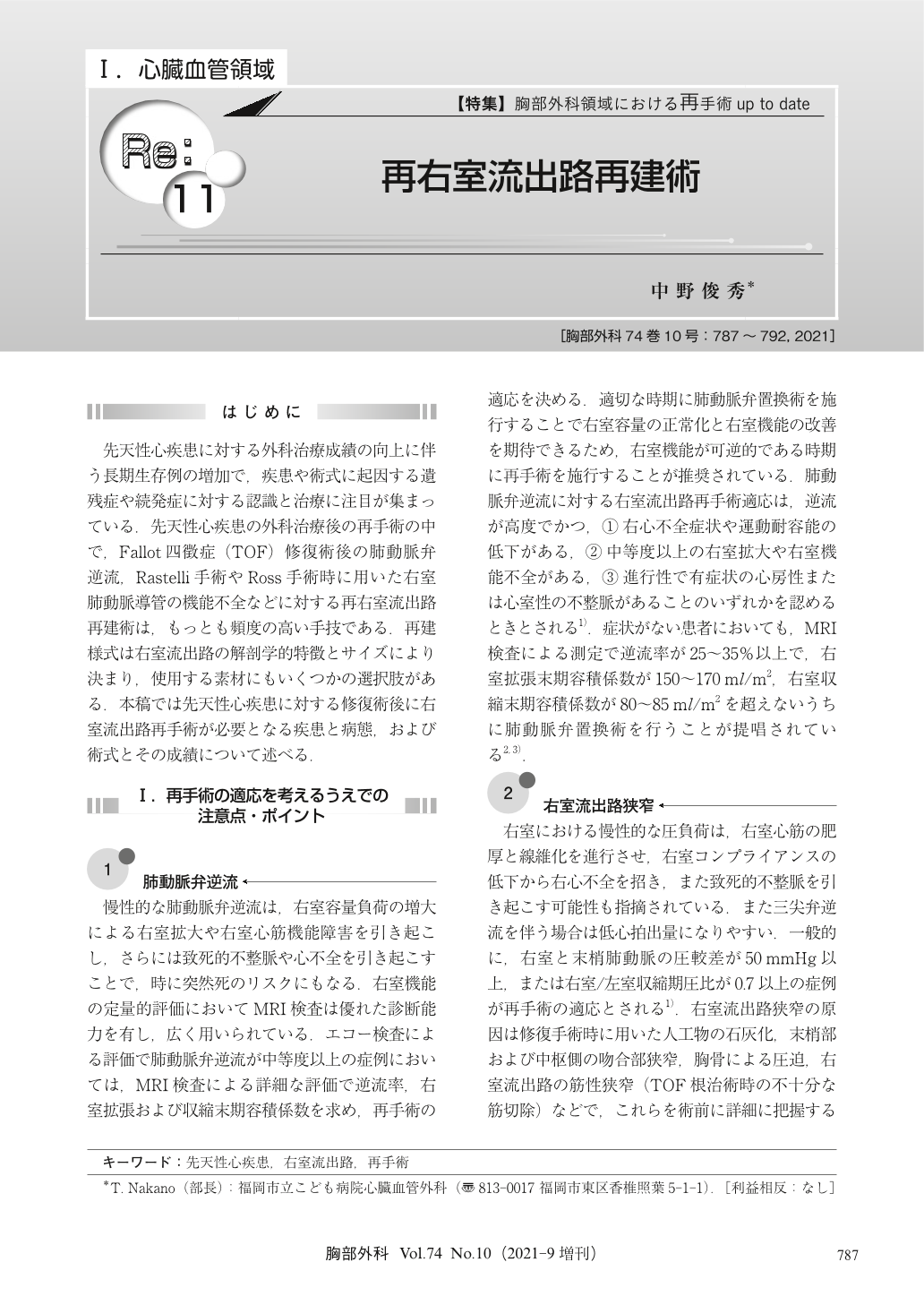Japanese
English
- 有料閲覧
- Abstract 文献概要
- 1ページ目 Look Inside
- 参考文献 Reference
先天性心疾患に対する外科治療成績の向上に伴う長期生存例の増加で,疾患や術式に起因する遺残症や続発症に対する認識と治療に注目が集まっている.先天性心疾患の外科治療後の再手術の中で,Fallot四徴症(TOF)修復術後の肺動脈弁逆流,Rastelli手術やRoss手術時に用いた右室肺動脈導管の機能不全などに対する再右室流出路再建術は,もっとも頻度の高い手技である.再建様式は右室流出路の解剖学的特徴とサイズにより決まり,使用する素材にもいくつかの選択肢がある.本稿では先天性心疾患に対する修復術後に右室流出路再手術が必要となる疾患と病態,および術式とその成績について述べる.
As more patients with congenital heart disease survive the definitive surgical repair, more attention has paid to their residual defects or late sequela which required surgical re-intervention. Redo-right ventricular outflow tract reconstruction is the most frequent reoperation, mostly indicated for pulmonary regurgitation after tetralogy of Fallot repair, or conduit stenosis in post-Rastelli patients. For patients with significant chronic pulmonary regurgitation, reoperation should be considered before right ventricular geometry and function becomes irreversible. In Japan, expanded polytetrafluoroethylene (ePTFE) valved conduit with bulging sinus has been widely used and has showed excellent long-term results. However, careful monitoring must be continued for right ventricular outflow tract function in order to maintain good quality of life of these patients.

© Nankodo Co., Ltd., 2021


